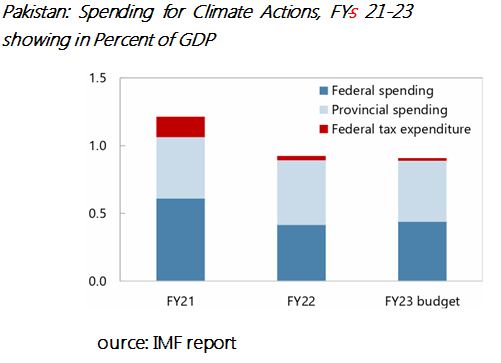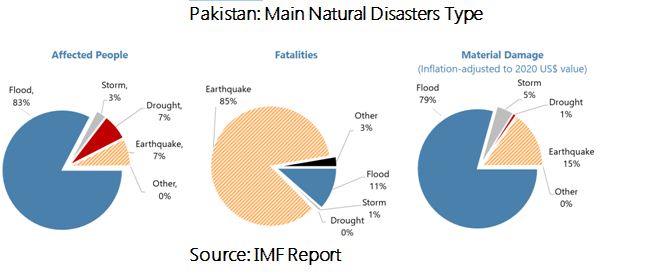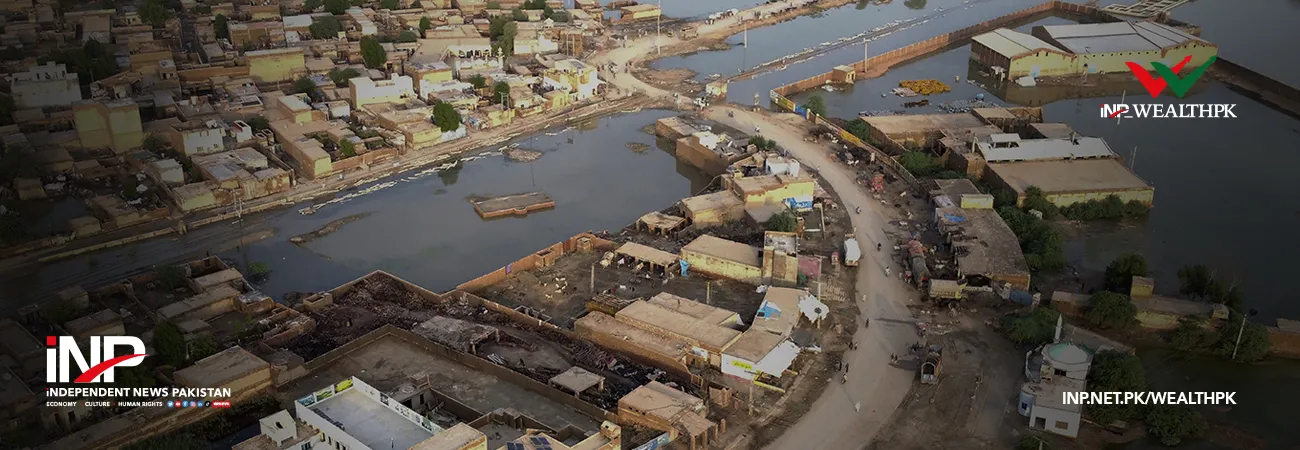INP-WealthPk
Amir Khan
Floodshighlight Pakistan's vulnerability to climate change and the urgent need for adaptation measures to protect communities and infrastructure. Pakistan’s climate-related spending is already about 1 percent of its GDP of FY23, said Jahangir Kakar,an environmental economist, while talking to WealthPK.

It's crucial to acknowledge that complete prevention of natural floods is not feasible due to their inherent role in the earth's ecosystem. However, various measures can be implemented to substantially mitigate their impact on the economy and people's well-being. These measures include investing in early warning systems, enhancing infrastructure, undertaking afforestation and reforestation efforts, promoting sustainable land use practices, raising public awareness and providing education, and conducting floodplain mapping and zoning. Adopting these strategies can significantly reduce the adverse effects of floods. “Pakistan aims to prioritize immediate and crucial ‘no-regret’ actions, including enhancing capital expenditure efficiency througha Climate Public Investment Management Assessment (PIMA) supported by the IMF Technical Assistance (TA),” Kakar explained. Additionally, the focus will be on policies that boost resilience, such as strengthening social spending, executing flood safety projects, and transforming the agri-food system, particularly after 2022.
“As a result of human-induced climate change, unusually heavy monsoon rains have led to widespread flooding in various regions of Khyber Pakhtunkhwa during the last 48 hours.Lower and Upper Chitral district administrations have declared an emergency until August 15 in response to the devastating impact of torrential rain, strong winds, and thunderstorms. These adverse weather conditions have caused extensive damage, including landslides and destruction of vital infrastructure,” he added. As per the latest report from KP's Provincial Disaster Management Authority (PDMA), in the last 24 hours, nine people have lost their lives, with two fatalities each reported in Swat and Battagram, four in Mansehra, and one in Buner. According to the International Monetary Fund, floods have emerged as the most consequential form of climate disaster in Pakistan over the recent decades, not only among hydrological hazards but also among all climate-related hazard types. This is attributed to their remarkably high frequency and severity.

The escalating impacts of climate change stressors, such as land degradation, desertification, water stress, glacial melt, and sea-level rise, are exacerbating Pakistan's urgent adaptation challenges. For example, soil degradation leads to internal migration. The country faces extreme water risk.Glacial meltaffects hydropower infrastructure, and sea-level rise threatens Karachi with salt-water intrusion. In light of this, capacity building and support from organizations like the UNEP are crucial for conducting critical needs assessments and strategies to enhance the country's resilience. Concluding, he said the international community had expressed its commitment to support Pakistan's rehabilitation and reconstruction efforts. Immediate attention is required to address the humanitarian crisis and build climate resilience to minimize the impact of future disasters. Additionally, a multi-stakeholder approach involving government, local communities, NGOs, and international organizations would be essential for successful flood risk management in Pakistan.
Credit: INP-WealthPk













